Jason Davis • Jun 23, 2014
The latest on NASA’s Asteroid Redirect Mission
For NASA, there’s nothing less certain than the future of the space agency’s human spaceflight program. All roads to Mars currently wind through controversial territories surrounding the Space Launch System, the Orion spacecraft and the Asteroid Redirect Mission. The latter, ARM, is an effort to send a robotic spacecraft to grab an asteroid (or a chunk of an asteroid), tow it back to the moon and visit it with a capsule full of astronauts.
During televised updates on June 18 and 19, NASA showcased its Orion and ARM progress. Three large banners trumpeted the ARM initiative's main categories: identify, redirect and explore. Here’s a look at each.
Redirect
I’ll start with redirect because there are two very different robotic capture vehicle concepts on the table. One will be chosen late this year, and the winner will automatically narrow NASA’s current asteroid candidates list by 50 percent.
When the Asteroid Redirect Mission was first unveiled, the artist’s concepts looked something like this:
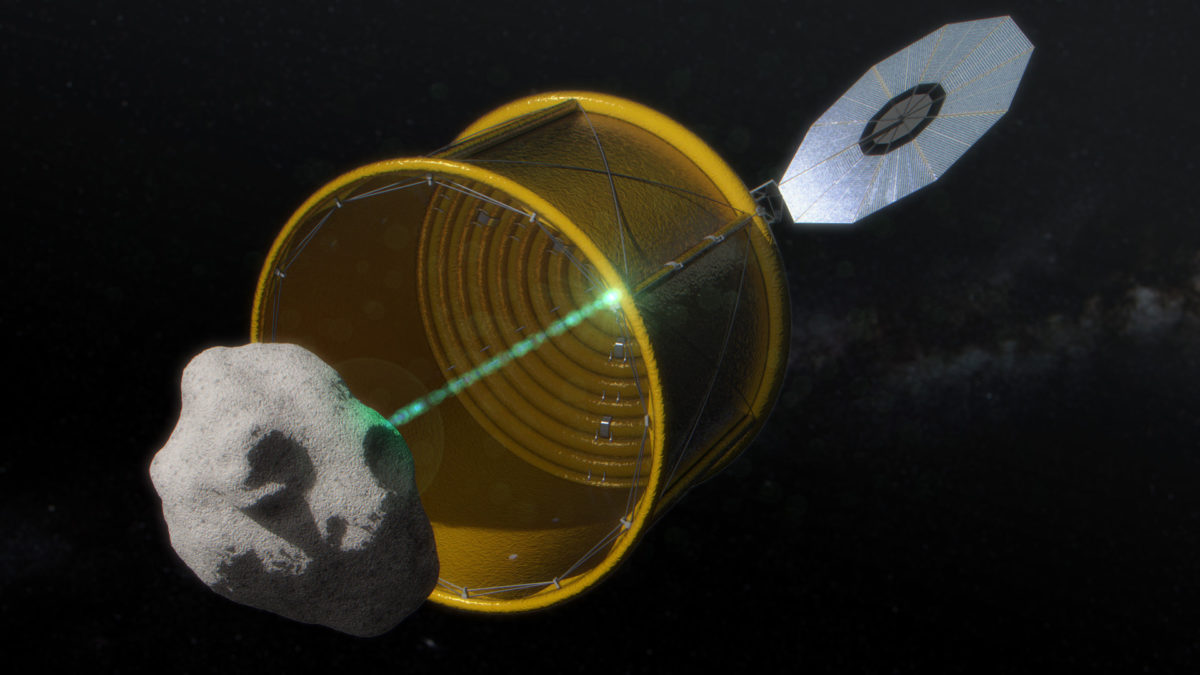
In this image, a capture spacecraft has deployed a 10-meter inflatable bag and is about to gobble up a single asteroid to tow back to lunar orbit. I’m not sure what the green laser is. I’d guess it’s either a laser being used for ranging or analysis, gratuitous lens flare, or quite possibly a Death Star prototype weapon.
This “big bag” asteroid capture vehicle is now called Option A. Option B looks like this:
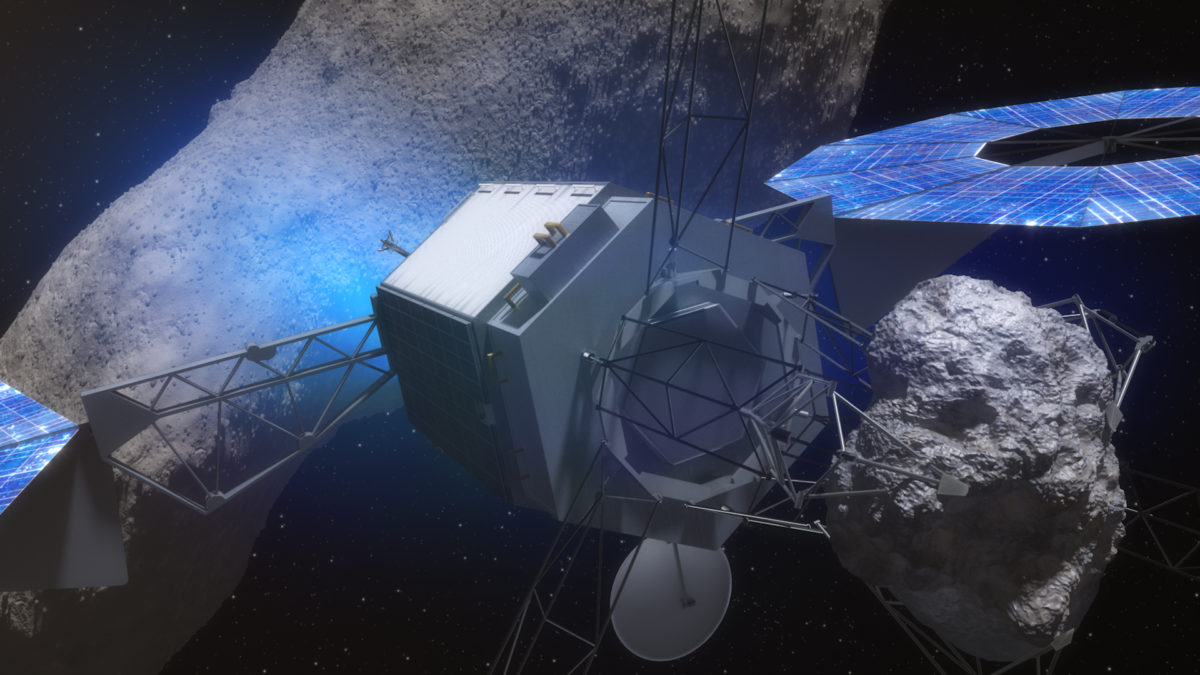
In this scenario, the capture spacecraft visits a large asteroid about 100 to 500 meters in diameter that is known to have individual boulders just a few meters wide strewn on the surface. The spacecraft lands, grabs a boulder and leaves.
In both cases, the spacecraft and captured asteroid are inserted into what’s called a Distant Retrograde Orbit, or DRO, around the moon. DROs are very stable over long periods of time. “The orbit that we currently have in mind is about 75,000 kilometers [47,000 miles] above the surface of the moon,” said ARM Program Director Michelle Gates during the June 19 briefing. She added the spacecraft and asteroid would be stable for more than a hundred years.
Because the type of asteroid required for options A and B is very different, NASA is currently hunting for both. Although the decision on the final spacecraft concept will occur later this year, Gates said there is currently no front runner. “We’re going through additional technical risk understanding and risk reduction for both capture options,” she said.
Deciding on a mission concept will narrow NASA’s asteroid search parameters. However, the space agency plans to hunt for its goldilocks asteroid for up to four more years. “We don’t plan to—nor do we want to—stop looking for targets,” Gates said. “Our current schedule shows that we wouldn’t need to make a final selection of a target until one year before launch.” Launch of the capture vehicle is currently scheduled for 2019.
Identify
NASA’s asteroid hunt begins with both ground and space-based sky surveillance telescopes that look specifically for near-Earth asteroids. On Earth, there’s the Catalina Sky Survey in Arizona, Pan-STARRS in Hawaii and the Space Surveillance Telescope in New Mexico. Space-based searches are performed by NEOWISE, a telescope in low-Earth orbit. NEOWISE was repurposed as an asteroid hunter after its coolant supply ran dry in 2010.
This armada of instruments is responsible for finding a lot of near-Earth objects, according to Paul Chodas, a program scientist for NASA’s Near Earth Object Program. “We’re finding near-Earth objects at about a hundred per month,” he said.
The pool of asteroid candidates is narrowed using a set of basic criteria for each ARM concept. Option A asteroids (the big bag retrieval concept) must have an Earth-like orbit with a close approach in the early 2020s. They must also be less than 10 meters wide. For Option B (the dine-and-dash retrieval concept), the asteroid’s orbit can be less accessible. The parent asteroid must be about 100 to 500 meters wide.
Candidates meeting these basic parameters are further analyzed for criteria such as shape, size, spin rate, color, composition and surface features. If the asteroid is close enough to Earth, radio observatories like NASA’s 70-meter dish in Goldstone, along with Arecibo Observatory in Puerto Rico, can be used. Infrared observations can be made using the NASA Infrared Telescope Facility in Hawaii, as well as the Spitzer Space Telescope (Spitzer’s future is uncertain, with budget constraints threatening to axe its mission extension).
This narrows down the list of “valid candidates” to six: three for Option A and three for Option B. The A candidates are 2009 BD, 2013 EC20 and 2011 MD. The B candidates are Itokawa, 2008 EV5 and Bennu. Japan’s Hayabusa spacecraft visited Itokawa in 2005, and NASA’s OSIRIS-REx is heading to Bennu in 2016. Paul Chodas said he expects the list of valid A candidates to increase by one to two per year, and the list of B candidates to increase by one per year.
Much of the June 19 ARM update focused on the newest Option A candidate: 2011 MD. This asteroid has an orbit slightly larger than Earth’s, and was discovered by the LINEAR program in 2011. Since then, 2011 MD has gradually fallen behind Earth, and was relatively close to the Spitzer Space Telescope in February 2014. Spitzer imaged it and narrowed the asteroid’s size to about 6 meters. Chodas said Earth will lap the asteroid in 2024, which is when it could be captured.
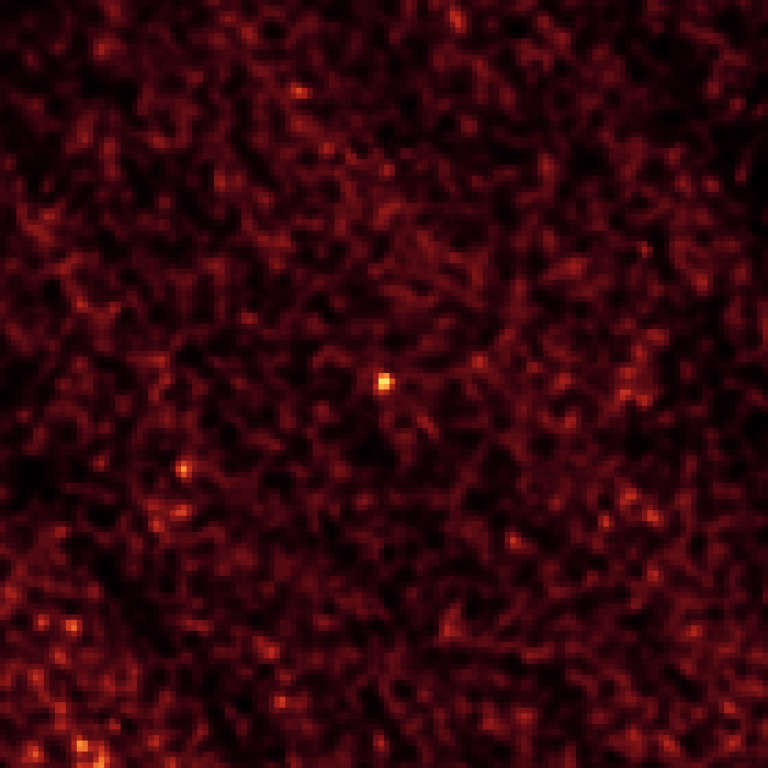
Here’s the interesting part: 2011 MD doesn’t look anything like the single, solid, lumpy asteroids we’ve been seeing in the ARM Option A concepts. It has a porosity of 65 percent, meaning two-thirds of the asteroid is empty space. The more porous an asteroid, the more likely it’s a small rubble pile loosely held together by mutual gravitational forces.
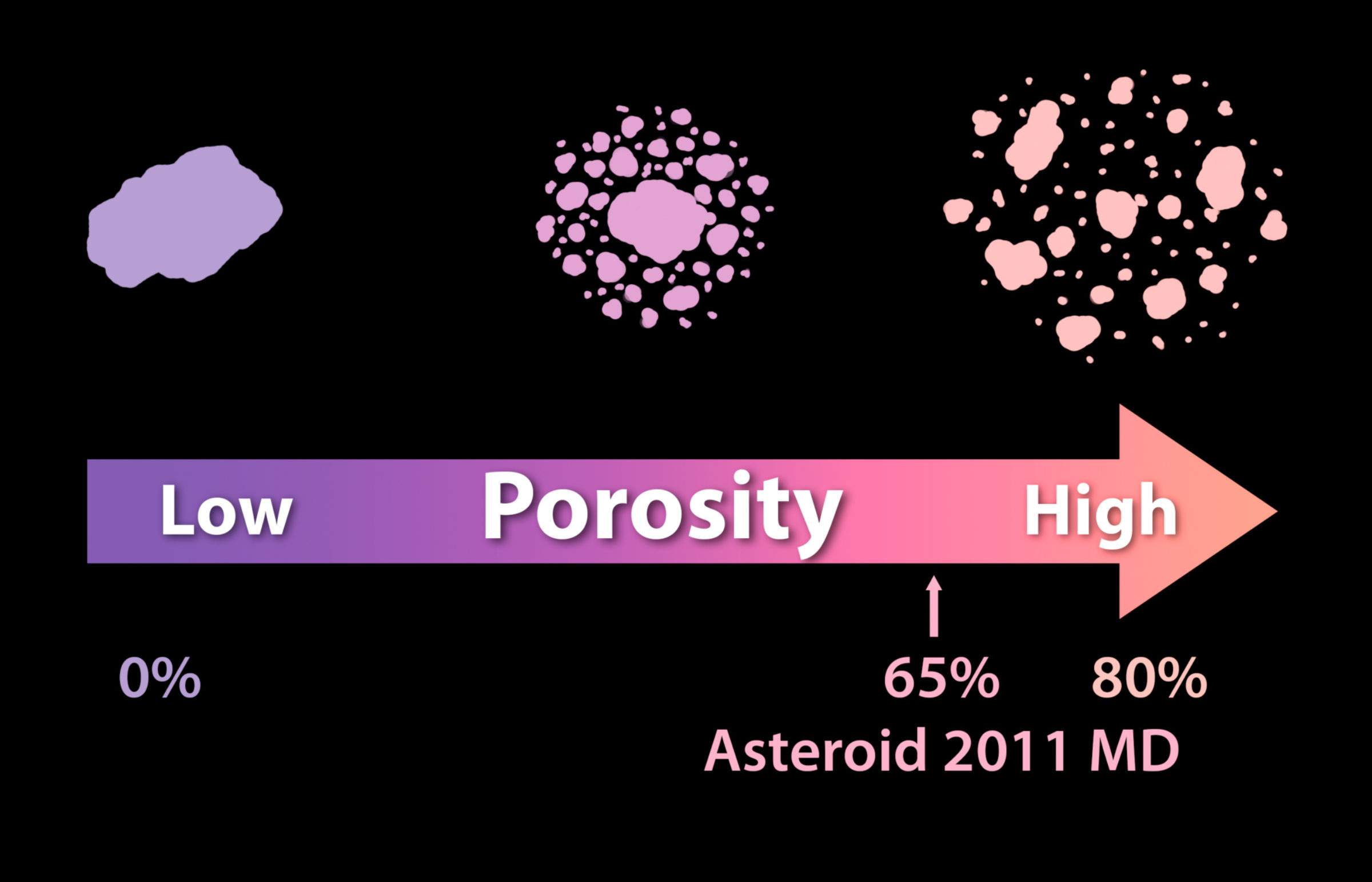
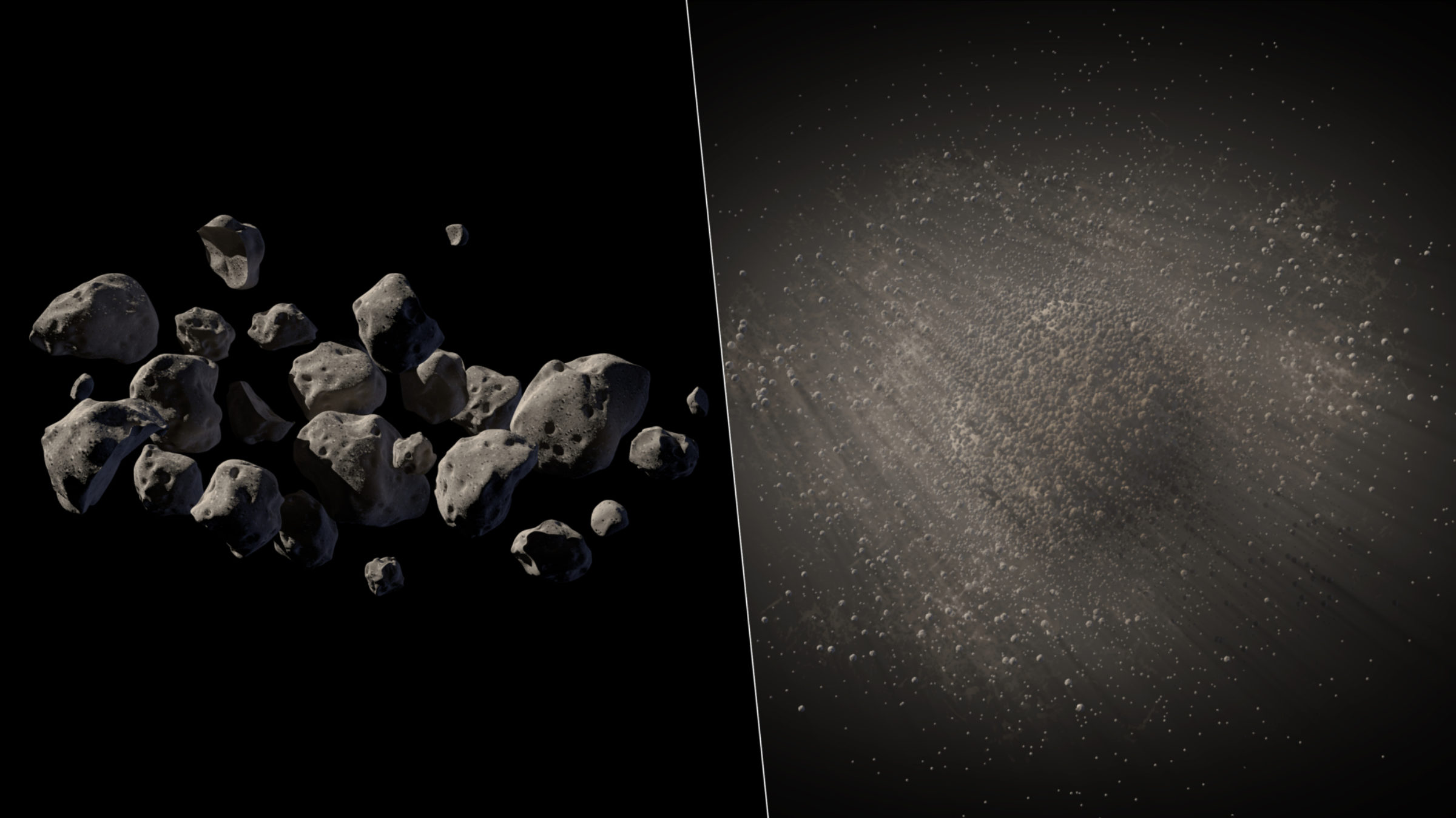
After seeing the artist's concepts of 2011 MD, I asked whether or not the “big bag” concept could snag entire asteroid piles rather than a single asteroid:
The artist's conception of 2011 MD was a rubble pile. Would you snag the entire pile using ARM option A? #askNASA
— Jason Davis (@jasonrdavis) June 19, 2014ARM Program Director Michelle Gates confirmed the inflatable capture bag can envelop a loosely bound pile of asteroids. Lindley Johnson, the program manager for NASA’s Near Earth Object Program, added, “You need to keep in mind that this is all material that is orbiting together, so it has the same relative velocity. With the capture spacecraft, we are matching the velocity to move up on it and capture that material.”
Explore
A crew of Orion astronauts launched atop the Space Launch System will eventually pay the captured asteroid a personal visit in lunar orbit. On June 18, NASA Administrator Charles Bolden and a contingent of Orion officials briefed the media on Orion's progress. The spacecraft was recently mated with its service module inside Kennedy Space Center’s Operations and Checkout Facility. In December, it will be launched on a test flight by a Delta IV Heavy.
Beyond that, the goals for future Orion missions are less certain. Here are the dates related to Orion, SLS and ARM that I’ve seen officially listed by NASA:
- December 2014: Exploration Flight Test 1 (EFT-1). First flight of Orion. Uncrewed.
- 2017: Exploration Mission 1 (EM-1). Second flight of Orion. Uncrewed. First flight of SLS.
- 2019: Launch of robotic ARM capture vehicle.
- 2021: Exploration Mission 2 (EM-2). Third flight of Orion. Second flight of SLS. First crewed flight.
It’s been more or less assumed that EM-1 will send Orion on a test flight to the moon, either for a single lap or a brief orbital stay. EM-2’s mission, however, seems fuzzy. Some reports have listed it as the mission that sends astronauts to visit the captured asteroid in lunar orbit. However, the 2021 timeframe doesn’t seem to jive with those of the ARM capture vehicle.
This 2013 ARM mission design document (PDF), for instance, uses 2009 BD as a sample target. The launch of the capture vehicle occurs by the beginning of 2017. In this scenario, the round-trip to 2009 BD takes six years, with the captured asteroid arriving in lunar orbit around 2024.
Because of the number of variables involved, pinning a specific timeline to ARM (and by extension, Mars) is currently an exercise in speculation. In any case, it’s still going to be awhile before we see astronauts poking around the surface of an asteroid.
Let’s Go Beyond The Horizon
Every success in space exploration is the result of the community of space enthusiasts, like you, who believe it is important. You can help usher in the next great era of space exploration with your gift today.
Donate Today

 Explore Worlds
Explore Worlds Find Life
Find Life Defend Earth
Defend Earth

